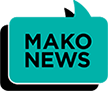Jacqueline Hinckley, director of the Bachelor of Science program in speech-language and communication disorders, became legally blind in 2021. Since then, she’s had a white cane, which people use when they’re visually impaired to be aware of their surroundings.
“In the United States, people use a white cane when they meet the criteria for being legally blind, which is not necessarily total blindness,” Hinckley said.
With October being World Blindness Awareness Month, Isa Prude, primary care resident with an emphasis in low vision in the College of Optometry, said it’s important for visually impaired people to live happy, independent lives.
“When we have more awareness about the different accessibility options for people who have lost their vision, it allows those people to be connected to those sources sooner, so that they’re able to come to terms and start to do the things that they’ve always wanted to do when their vision has been lost,” Prude said.
The Eye Care Institute at NSU Health has several resources to help visually impaired people, like the low vision rehabilitation service.
“The low vision rehabilitation service is open to any patients who are having a reduction in vision that no longer gets corrected with glasses or contacts, medications or surgeries,” Prude said. “We do full low-vision evaluations, in which we assess the visual acuities of the patient, as well as talking about their functional needs and goals that they might be having difficulties with.”
Prude said the clinic assesses different devices that the patients can use, including magnification, telescopes, reading glasses or technology like Optical Character Recognition that reads audio. The Eye Care Institute also works with Lighthouse of Broward, a non-profit organization that helps people with vision impairment.
“I have been super impressed with the low vision clinic at NSU,” Hinckley said. “I’ve only been at NSU for six years, so I’ve been at lots of other eye clinics and I think it’s great. They evaluate your vision, but they’re the ones that got me to Lighthouse, got me to my mobility training, my white cane and some other trainings, too,” Hinckley said.
Hinckley said around 10 to 15% of visually impaired people are totally blind.
“Most people who have vision problems and may be using a white cane can see a little bit,” Hinckley said. “I think we have to be more understanding of how disabilities of all kinds have ranges and gradations.”
While NSU has many resources, Prude said some things can be improved, such as having more automatic doors on campus, adding the signs on campus bright letters and giving automated voices to the crosswalks.
“Making sure that it has the talking sound that says the actual number that’s going down, saying when it’s available to walk. I think that can be one that’s helpful,” Prude said.
Hinckley also suggested adding tread to the stairs on campus, such as at the Carl DeSantis Building. With the tread, people with low vision would be able to see the stairs better.
“With a white cane, of course I can feel the steps with the cane, but people with low vision might have trouble seeing steps that don’t have those markers,” Hinckley said.





Be the first to comment on "Low-vision clinic helps its patients during World Blindness Awareness Month"